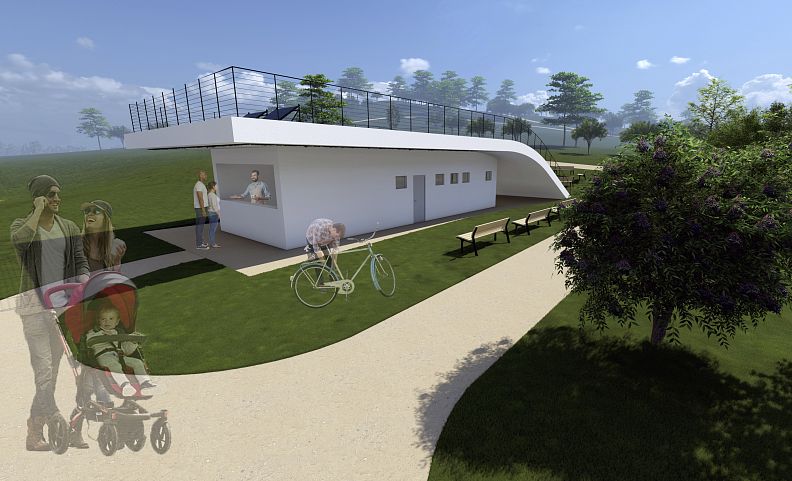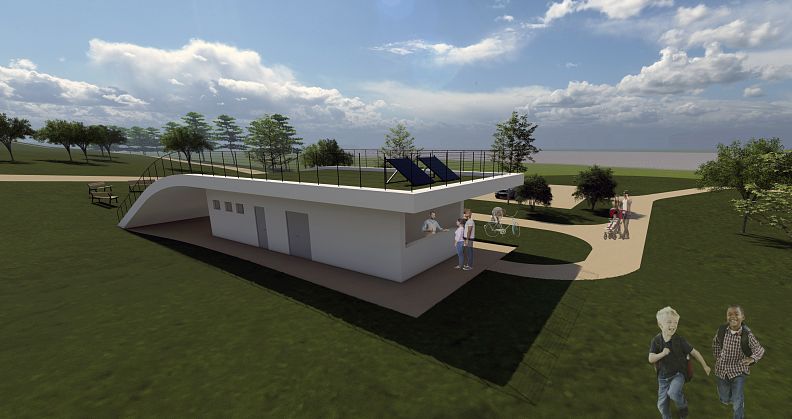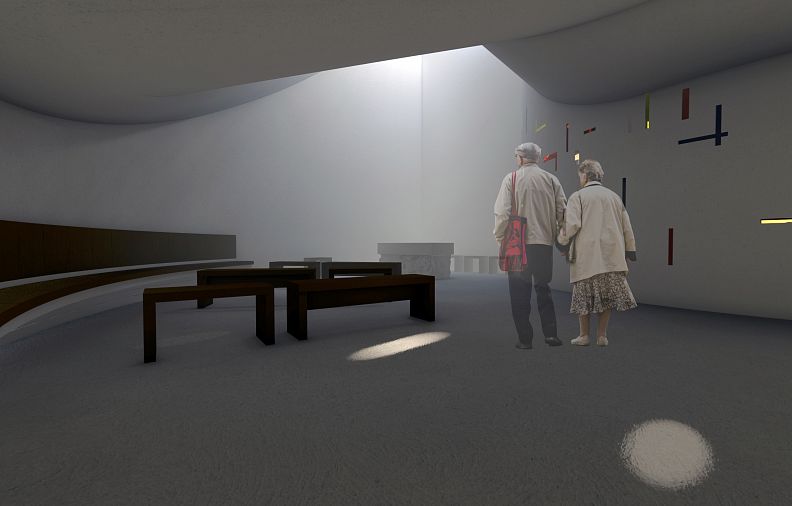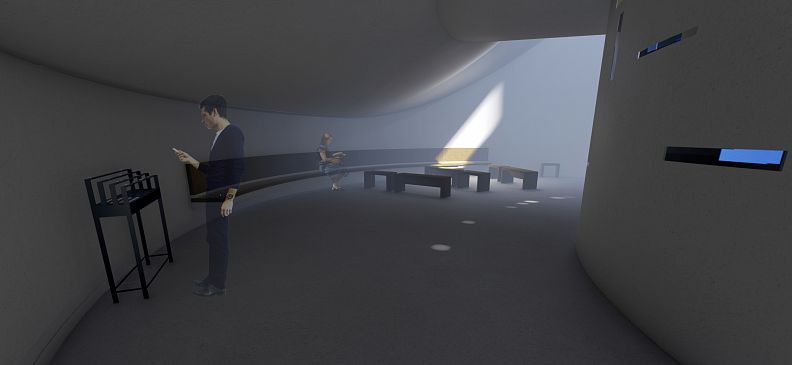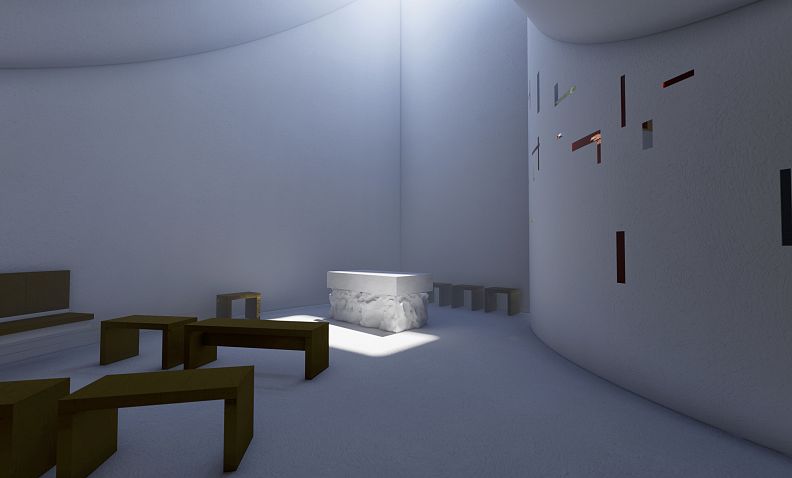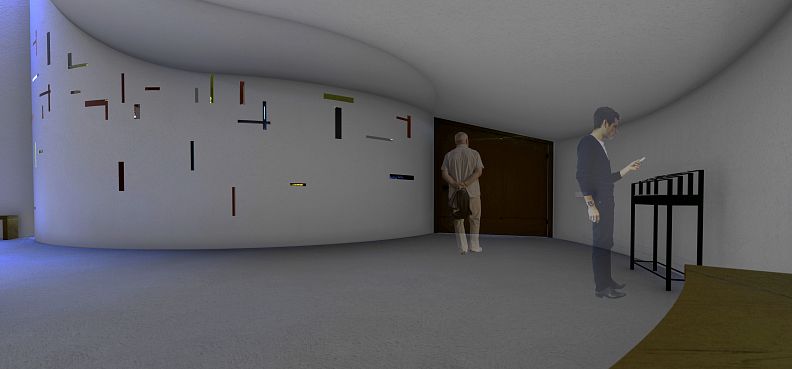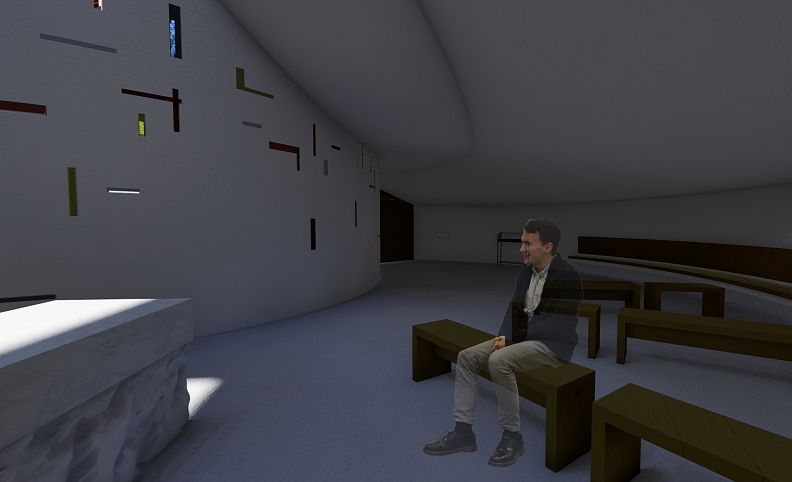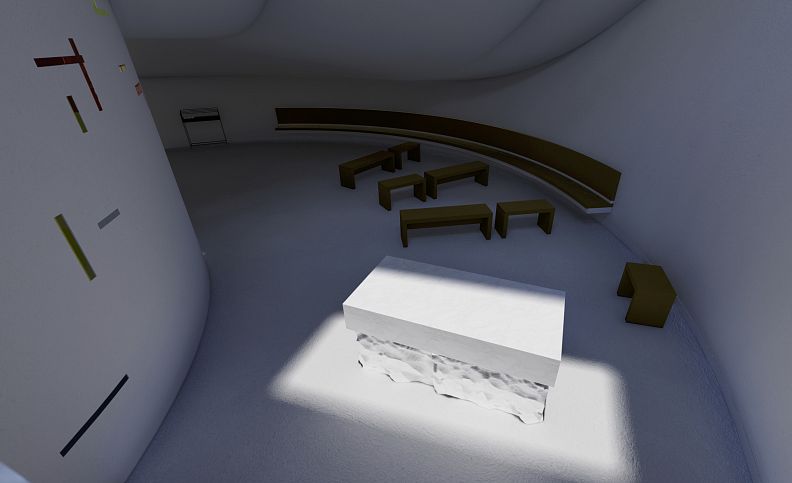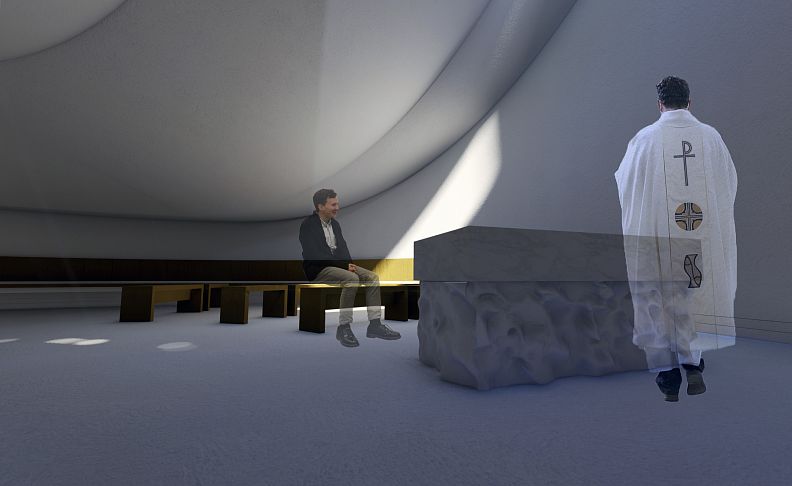Kaple Pozořice / Pozorice Chapel

Project idea
The task of the study was to design a chapel on the Poustka hill near the town of Pozořice. The work includes the solution of access roads, parking areas and bistro with restrooms for visitors.
The concept is based on the idea of creating a chapel as a hermit's cave, a place for darkness to meet light. The grading mass on the moon-shaped floor plan allows the entrance to be placed at one end, at the other end culminating in a roof skylight, the main source of lighting and a symbol of God. Due to the curvature of the chapel, the light source is not visible from the entrance, which helps to create a mystery that invites visitors further into the space and creates a place for outdoor stage at the same time. The wall adjacent to the outdoor stage is artistically designed using smaller colored skylights, which also complete the lighting in the interior. The glass panels are based on the motif of a cross and are oriented in different sizes in the horizontal and vertical directions. The main landmark is a cross placed on the tower of the chapel. The sloping of the chapel allows water to drain and easier maintenance.
Bistro at Poustka is designed as a simple single-storey rectangular building with an organic walkable green roof, which allows merging with the landscape, while creating covered entrances to the building.
Project description
Pozořice is a small town in the district of Brno-venkov, 15 km east of Brno, Poustka is located south of the village. The area of the hill was declared an important landscape element in 2000, mainly due to the diverse habitats discussed in the short nature trail. However, this hill is also remarkable geologically; lies literally on the border of the Hercynian massif and the Alpine-Carpathian system. At the time when the landmark was flooded by the Tertiary sea, Poustka Hill was an island. Poustka also has its significance from the historical point of view; hermits once lived here, who gave the hill its name (hermit = poustevník in czech). Today, Poustka is largely overgrown with bushes with a retransmission tower and a dilapidated reservoir at the top; nevertheless, it still offers impressive views, especially to the southeast, where the landscape is still without disturbing buildings.
The proposal aims to take into account and make the most of the quality of the site and create a place for silence, prayer, meditation, rest; as it once was in the days of the hermits. For this reason, the parking and the bistro are located at the foot of the hill; so as not to disturb. There are two access roads to the chapel, one is a modification of the already existing functional path that leads directly. The second path is longer and leads along the contours; it is intended as barrier-free. The chapel is located at the top of the hill, instead of a reservoir and a transmitter; the proposal envisages their removal. The rotation of the chapel allows the creation of an anteroom with a view to the southeast, the tower with the cross plays the role of a new landmark in the landscape visible especially from the main road leading to Pozořice.
Technical information
The chapel is designed as a concrete shell and will not be heated. Natural lighting will be provided by the roof skylight and also by colored skylights in the wall. Ventilation is possible through a door and an openable roof window, which can be opened from the interior using a telescopic pole.
The bistro building will also be designed as a monolithic concrete structure, only the internal partitions will be made of classic Porotherm masonry. The roof is designed as a walkable intensive green roof. The service of the building will be seasonal. The source for the technical equipment will be solar panels located on the roof. Heating is provided by floor convectors. The building also has a kitchen with sink, toilet and shower for employees, toilet for the public; all made of stainless steel for easier maintenance and protection against damage.




